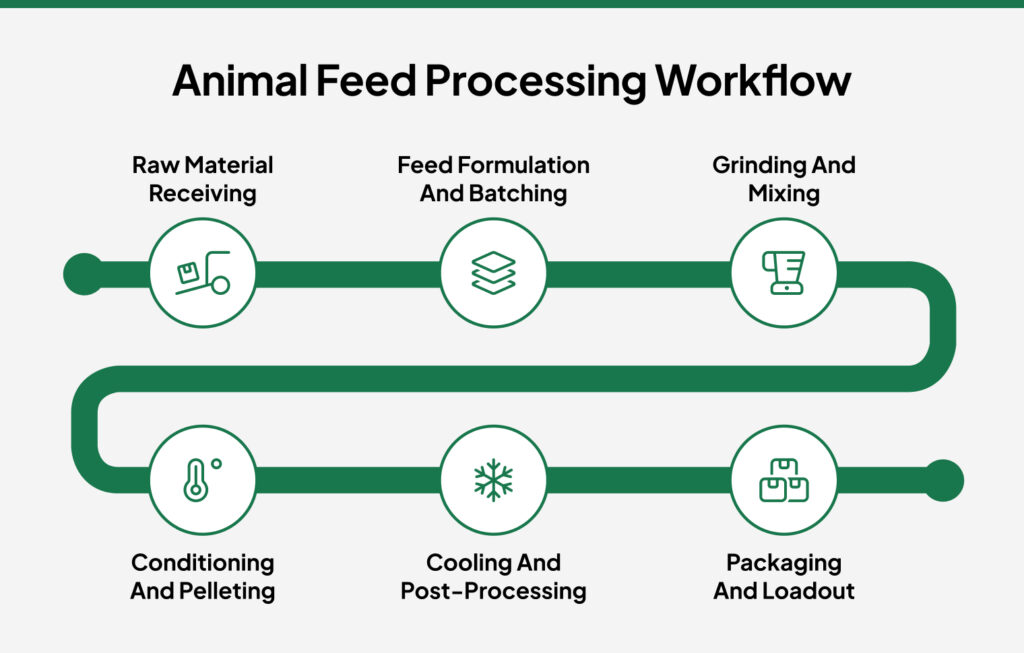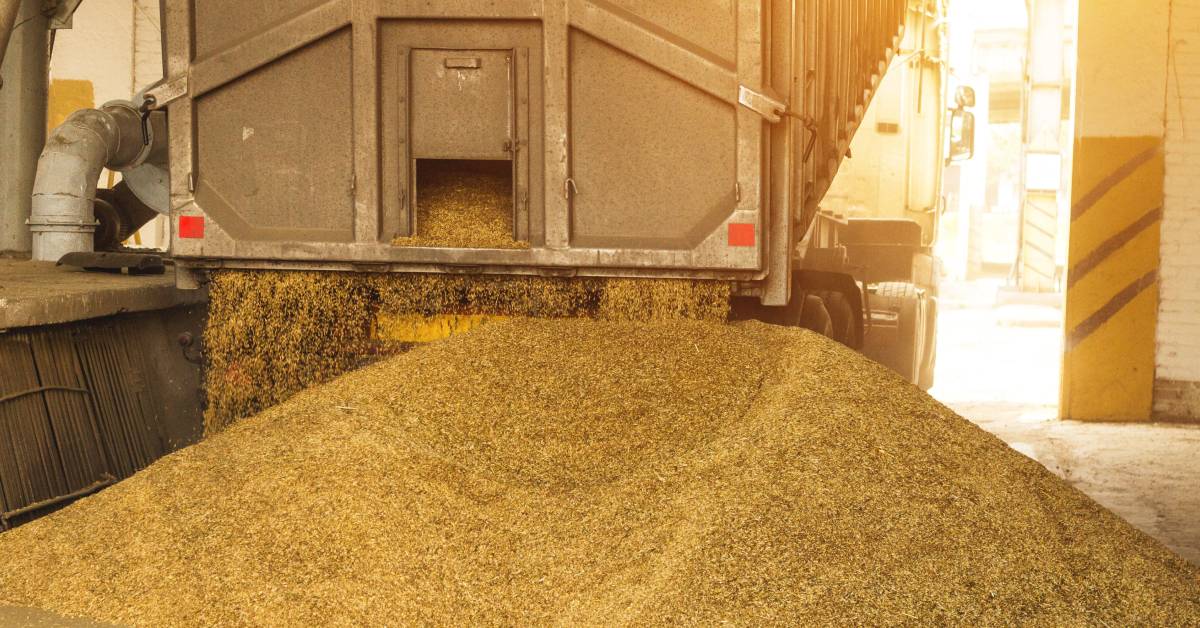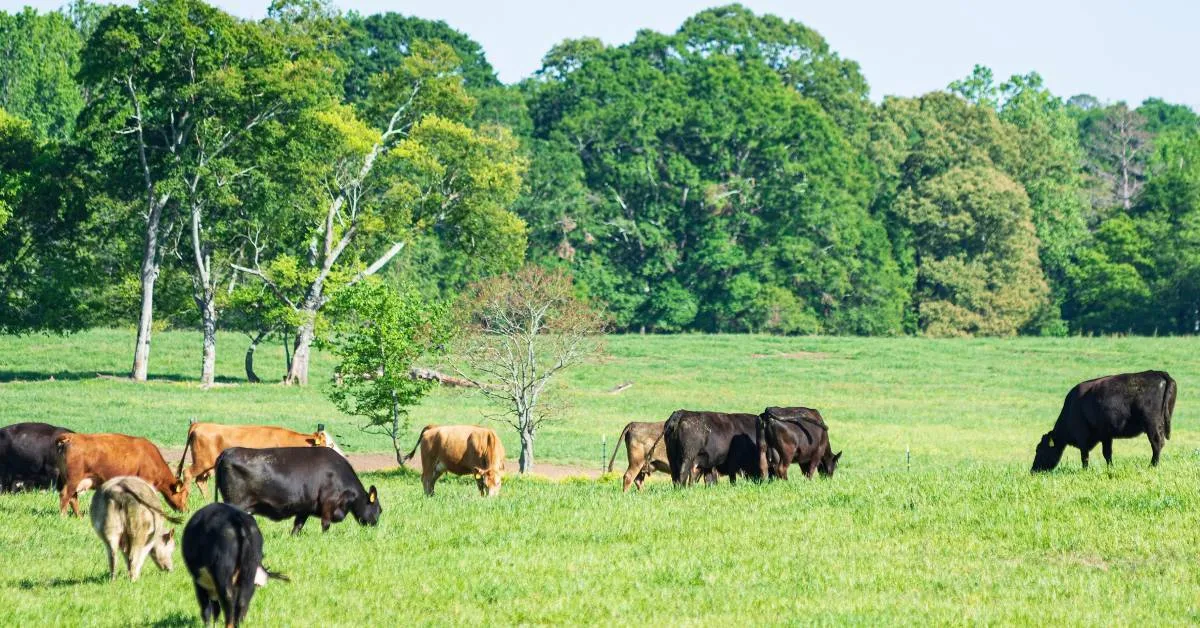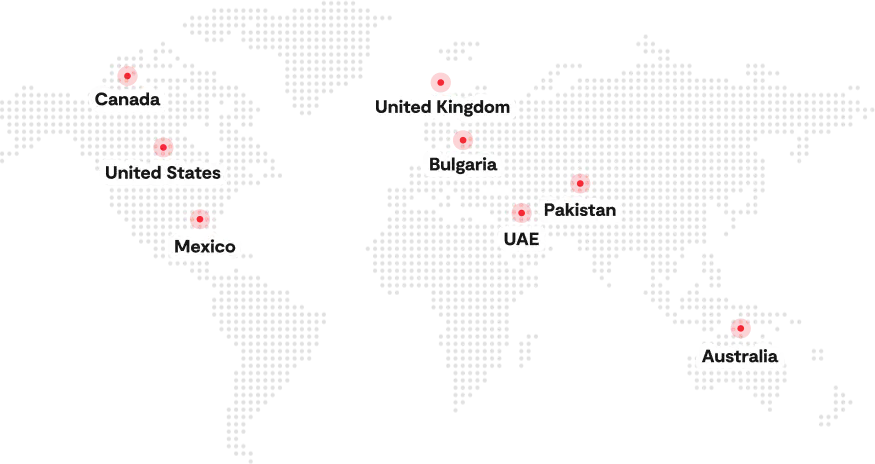Feed manufacturing is no longer a simple matter of grinding and mixing. Today, animal feed processing refers to the series of steps involved in converting raw agricultural ingredients, such as grains, oilseeds, vitamins, and minerals, into balanced, digestible feed products specific to livestock species. It is a multi-step, data-sensitive operation where quality, precision, and cost control must align at scale.
With feed costs accounting for up to 70% of total livestock production expenses, what happens inside a mill has a direct impact on farm profitability. Processors face increasing pressure to meet species-specific nutritional standards while maintaining consistency batch after batch. A slight error in moisture, particle size, or nutrient balance doesn’t just affect feed quality. It also affects animal performance, producer trust, and your bottom line.
This blog breaks down the key stages of animal feed processing, outlines common production challenges, and explores how modern technologies, like feed mill automation and ERP, are helping manufacturers improve efficiency and stay competitive in a tightening market.
Key Stages In Modern Animal Feed Processing
In any feed mill, the real margin is made in process control. Whether you’re running pelleted rations for poultry or custom mixes for cattle, the stages in your production flow directly shape consistency, cost per ton, and product integrity.
Below, we break down the key stages that define a well-run, modern animal feed processing operation, and where minor improvements can lead to major gains in feed quality and plant profitability.

1. Raw Material Receiving
This step sets the foundation for every final batch of feed that follows. Every load that enters your mill needs to be checked for moisture, contamination, and consistency, not just weighed and dumped. More mills are now using handheld sensors and digital intake logs to track ingredient quality and link loads to specific suppliers in real time.
☑️Watch Out:
Ingredients like soybean meal and DDGS often flow unevenly due to clumping or bridging. Installing flow sensors or monitoring unloading rates in animal feed processing helps catch these issues before they affect batching accuracy.
2. Feed Formulation and Batching
This step ensures that each batch delivers the right balance of energy, protein, fiber, vitamins, and minerals, customized to the target species and growth stage. Modern mills rely on formulation software to adapt recipes based on ingredient variability and price shifts. Batching systems then pull precise amounts for each mix, minimizing overages, shrinkage, and input waste across species-specific rations.
☑️Watch Out:
Many mills overlook micro-ingredient batching accuracy. To avoid this, use auto-dosing systems and regularly check your scales. It’s a simple way to prevent nutrition gaps that quietly hurt animal growth and feed efficiency.
3. Grinding and Mixing
Grinding reduces particle size to improve digestibility and ensure uniform feed mixing. The goal is a consistent texture that supports even nutrient intake and pellet quality. Once ground, ingredients are mixed to achieve a balanced distribution of nutrients. Inconsistent grind size or poor mixing in animal feed processing leads to feed separation, reduced animal performance, and formulation loss.
☑️Watch Out:
Inconsistent grinding is often caused by worn hammermill screens or unnoticed ingredient changes. Set a weekly schedule in feed mill software for screen checks and particle size testing to avoid costly performance dips.
4. Conditioning and Pelleting
Conditioning in animal feed processing uses steam and heat to prepare mash for pelleting, improving durability and digestibility. The right moisture, temperature, and retention time are critical. Advanced mills adjust these parameters by species and recipe, improving pellet integrity without overcooking nutrients.
☑️Watch Out:
Many mills still run fixed conditioning settings. Instead, adjust steam and dwell time based on batch moisture and fat content. This small adjustment can improve pellet quality and reduce energy waste.
5. Cooling and Post-Processing
After pelleting, feed exits at high temperatures and must be cooled to prevent moisture buildup, mold growth, and nutrient loss. Post-processing steps, like crumbling for young animals or adding a liquid coating, are done here. Consistency in this stage is critical to shelf life, pellet integrity, and final feed quality.
☑️Watch Out:
Ambient air conditions directly affect cooling efficiency, yet many systems don’t adjust for seasonal shifts. Integrate temperature and humidity sensors to auto-adjust airflow and prevent bin overcooling or condensation.
6. Packaging and Loadout
This final stage is where finished feed is bagged or loaded in bulk for delivery. Accuracy, labeling, and traceability matter just as much here as in processing. Many businesses integrate packaging lines with feed mill ERP systems to automate inventory updates and reduce dispatch errors in high-throughput environments.
☑️Watch Out:
A common slip-up is mismatched labels or manual entry errors during peak hours. Automate label printing from your batch records to ensure each load is correctly tagged for traceability and compliance.
Current Challenges In Feed Processing & Distribution
Behind every finished batch are dozens of small decisions that can impact cost, quality, or delivery. Most feed mills aren’t struggling because of one big issue, but because of repeated slowdowns, rework, and process blind spots that add up. Here are the major challenges that tend to show up in animal feed processing:
- Raw Material Price Volatility
Ingredient prices, especially corn, soybean meal, and additives, can shift week to week. A 10% rise in corn cost alone can squeeze margins on every ton produced. Without agile formulation tools, mills struggle to keep animal feed rations both effective and affordable.
- Moisture & Pellet Quality Control
Inconsistent steam or retention time during conditioning leads to poor pellet durability or excess fines. For instance, fluctuating mash moisture during monsoon seasons often causes soft, breakable pellets that won’t hold up during transport or storage.
- Rising Production Expenses
Energy costs, labor shortages, and frequent equipment maintenance are major factors that affect the profitability of a feed manufacturing business. An animal feed processing mill running older hammer mills may face high electricity bills and downtime, especially during peak hours, significantly impacting throughput and raising per-ton feed costs.
- Loss of Nutrient Value
Essential additives like lysine or enzymes degrade if exposed to excess heat or held in silos too long. For example, uncoated vitamins may lose potency during conditioning, leaving the final feed deficient, impacting animal health and growth rates.
Here are practical steps you can take to address each challenge in animal feed processing effectively:
| Challenge | Quick Solution |
| Unpredictable Ingredient Costs | Integrate dynamic formulation software that auto-adjusts based on real-time ingredient costs. |
| Inconsistent Pellet Integrity | Install inline moisture sensors and adjust steam settings based on humidity and feed type. |
| Rising Production Expenses | Optimize equipment scheduling and energy use; consider variable frequency drives (VFDs) for motors. |
| Loss of Feed Value | Apply heat-sensitive additives post-cooling and track nutrient retention to avoid over-conditioning. |
Role of Technology In Animal Feed Processing
In recent years, more feed mills have begun investing in automation, not as a trend, but as a response to tighter production targets and cost pressure. For example, processors like Smithfield and Kerry Agribusiness have upgraded batching and motor control systems to reduce variation, energy use, and manual intervention. These aren’t complete overhauls. They’re focused upgrades where even small dosing accuracy or process timing improvements lead to measurable gains across throughput, quality, and cost per ton.
Up until now, we’ve discussed specific points in animal feed processing where technology can help address key challenges. But if you’re assessing where to begin or expand your feed mill automation process, here’s a compiled list of six tech innovations that feed mills are adopting to improve operational control:
1. Inline Moisture Sensors & Temperature Monitoring
Even small shifts in moisture during conditioning or cooling can lead to costly losses, either through fines, mold risk, or rejected batches. Inline sensors don’t just monitor moisture; they allow operators to correct in real-time, instead of relying on post-batch lab tests that are often too late to act on.
Temperature sensors are critical in protecting nutrient stability, especially in feeds with heat-sensitive components like amino acids, probiotics, or enzymes. Without them, you’re guessing, and in high-volume operations, guesswork shows up as inconsistent pellet durability or nutrient loss that impacts animal performance.
2. Near-Infrared (NIR) Analyzers
NIR analyzers provide rapid, on-site analysis of raw materials and finished feed, measuring moisture, protein, fiber, and fat content in seconds. This eliminates delays from external lab testing and allows you to adjust formulations on the fly based on actual nutrient values, not supplier specs.
For example, if incoming soybean meal tests lower in protein than expected, your system can instantly rebalance the formula, avoiding undernourished batches or overuse of costly supplements.
3. IoT-Enabled Equipment Monitoring
Animal feed processing mills run on dozens of machines that operate under heat, dust, and pressure, yet most only receive attention when something breaks. IoT-enabled monitoring changes that by placing sensors on key equipment like hammermills, pellet presses, conditioners, and conveyors. These sensors track motor loads, temperature, and airflow in real time, flagging issues like screen wear or steam delivery problems before they affect output or require costly repairs.
4. Big Data Analytics
Most mills collect data, but very few actually use it. Big data analytics helps feed mills move from reactive decision-making to pattern-based improvements. For example, by analyzing months of pellet durability, steam usage, and input specs, mills can pinpoint what’s quietly driving inconsistency or overuse.
Rather than making adjustments based on feel or isolated incidents, operators can act on trends, such as identifying which ingredient lots regularly lead to fines or energy spikes.
5. Feed Mill ERP Systems
When production, inventory, and quality checks live in separate systems, or worse, on paper, things get missed. Feed gets batched with outdated specs. Inventory shows you have 2 tons of an ingredient that was used yesterday. And when a compliance audit comes around, pulling traceability data turns into a headache.
A feed mill ERP connects every stage of the process, from raw material intake to final loadout, so every department works in sync. Finding the right ERP provider, however, is a challenge as you need a system that fits your feed production workflows, not the other way around.
Folio3 AgTech Feed Mill ERP brings an edge to animal feed processing here. It’s purpose-built for feed processors, with modules that align with how real mills operate, from managing species-specific formulations to tracking supplier performance and automating QA checks. Whether you’re handling bulk batching or traceability for niche blends, it’s designed to give operators control without complicating day-to-day work.
Quick glance at key modules you can get in Folio3 AgTech Feed Mill ERP:
- Formulation Management: Build and manage species-specific formulas using real nutrient test values, not just book specs. The system alerts you when an ingredient shifts outside nutritional tolerance, before it affects your next batch.
- Batch Production & Scheduling: From grinding to pelleting, every batch is tracked by run time, operator, and output yield. You can schedule jobs based on formula type, mill capacity, or even by customer delivery windows.
- Inventory & Procurement: Track inventory down to bin level, factoring in shrink, hold times, and active rework. When key inputs run low or deviate from spec, the system flags it before production slows down.
- Traceability & Lot Tracking: Lot traceability isn’t just a report; it’s built into every step. From incoming truck loads to outbound dispatch, every transaction is linked to the supplier, batch, and QA status.
- Dispatch & Loadout Management: Whether you’re dispatching bulk feed or bagged product, this module ensures the right load goes to the right farm. It includes automated BOLs, delivery logs, and proof-of-shipment records.
6. AI-Powered Feed Optimization Tools
Conventional least-cost formulation models often assume static nutrient values and ignore process outcomes, like the impact of ingredient particle size on pellet durability or how seasonality alters moisture retention. AI tools solve this by learning from production data, ingredient history, and feed conversion outcomes over time.
For example, if a formula consistently requires excessive conditioner steam, the system flags it, not just as a cost issue, but as an operational inefficiency. Over time, this reduces trial-and-error at the formulation level and aligns feed specs more closely with actual mill behavior and animal performance.
Conclusion
Modern animal feed processing has become a data-driven, precision-based operation. Technologies like real-time moisture control and AI-driven formulation aren’t just digital upgrades; they’re direct answers to the daily challenges mills face. When processes are spread across disconnected systems or paper-based workflows, even small errors, like a missed spec update or an incorrect batch weight, can snowball into costly issues.
The next step isn’t a full-scale transformation. It’s choosing the right set of strategies to fix the biggest bottlenecks in your feed production process. Whether you’re evaluating ERP, sensor tech, or AI tools, the idea is to choose solutions that adapt to your feed manufacturing plant’s day-to-day realities.
FAQs
What Is Animal Feed Manufacturing and Why Is It Important?
It’s the process of turning raw ingredients into balanced feed customized to species-specific nutritional needs. It’s vital because feed quality directly affects animal health, growth rates, and farm profitability.
What Are the Key Stages in the Animal Feed Manufacturing Process?
The process starts with receiving and inspecting raw materials. Next, feeds are formulated and batched based on nutritional targets. These batches are ground, mixed, and conditioned before being pelleted for density and digestibility. Once cooled, feeds go through quality checks and are packaged or loaded for delivery. Each stage influences final product quality, efficiency, and regulatory compliance.
How Does Feed Mill Software Help Optimize the Manufacturing Process?
It brings every step, formulation, batching, inventory, quality, and traceability into a single system. This eliminates manual errors, flags deviations instantly, and gives managers the data to improve throughput, compliance, and cost control without guesswork.
How Can Folio3 AgTech Feed Mill ERP Improve Feed Production Efficiency?
Feed mill ERP by Folio3 AgTech is built around real feed mill workflows. It helps maintain precise formulations, automate batch production, and trace every ingredient and lot through the system. That means fewer manual interventions, faster response to issues, and more consistent feed at a lower production cost.






